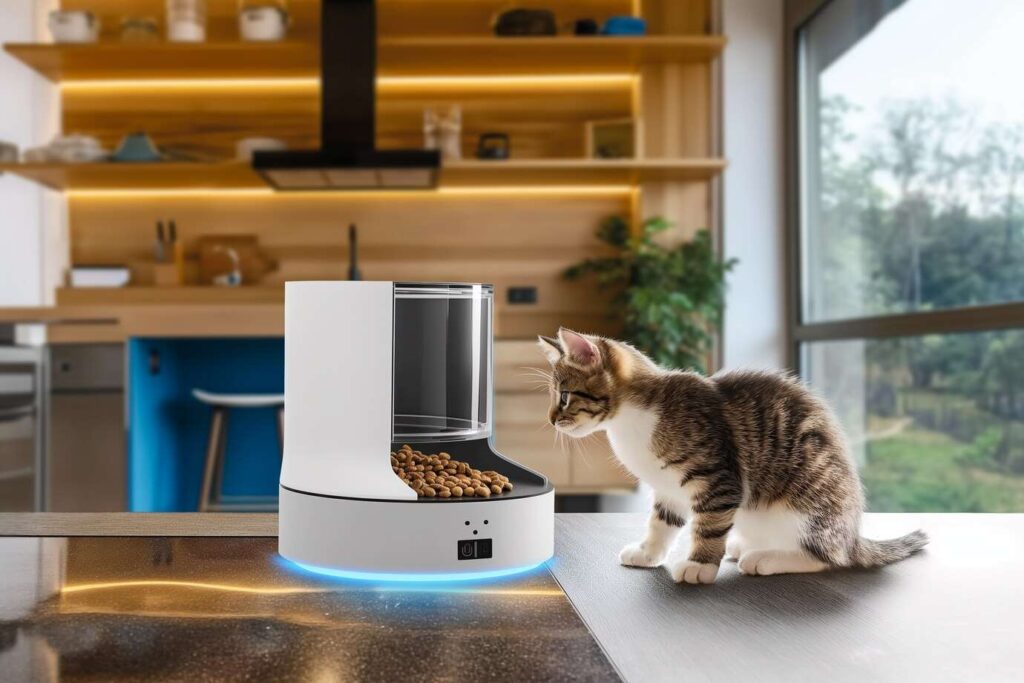Keeping your cat’s litter box clean is essential for their health and your home’s freshness. While traditional manual litter boxes have been the go-to for years, automatic self-cleaning litter boxes are gaining popularity for their convenience and advanced features. But is the upgrade really worth it? In this guide, we’ll compare automatic vs. manual litter boxes, weighing the pros, cons, and key factors to help you decide which option best suits your lifestyle—and your feline friend’s needs.
What Are Automatic and Manual Litter Boxes?
Manual litter boxes are the traditional choice for cat owners, requiring daily scooping to remove waste. They come in several designs:
- Open trays (simple and affordable but offer no odor containment).
- Covered/hooded boxes (provide privacy and reduce litter scatter but may trap odors).
- Sifting boxes (use removable trays to separate clumps from clean litter, making cleaning slightly easier).
While manual boxes are budget-friendly and low-tech, they demand consistent maintenance to prevent odors and bacteria buildup.
Automatic (self-cleaning) litter boxes, on the other hand, use technology to minimize manual scooping. Common mechanisms include:
- Rake systems (automatically sift and remove clumps into a waste compartment).
- Rotating globes (tumble to separate waste from clean litter).
- Conveyor belts or flushing systems (less common but highly efficient).
Many models also feature odor control, sealed waste storage, and even smart connectivity (like app alerts when the tray is full). While more expensive upfront, they save time and reduce daily maintenance—ideal for busy pet owners. However, some cats may need time to adjust to the noise and movement of automatic cat litter boxes.
Pros and Cons of Automatic Litter Boxes
Pros of Automatic Litter Boxes
- Ultimate Convenience:The biggest advantage? No daily scooping! Automatic boxes self-clean after each use, saving you from the unpleasant chore of manual waste removal.
- Superior Odor Control: Many models feature sealed waste compartments and carbon filters, trapping smells more effectively than traditional boxes. Some even have UV sterilization for extra freshness.
- Time-Saving for Busy Owners: If you travel often or have a hectic schedule, an automatic box ensures your cat always has a clean litter area without constant supervision.
- Smart Tech Features: High-end models offer Wi-Fi connectivity, sending alerts when the waste bin is full or tracking your cat’s bathroom habits for health monitoring.
- Better Hygiene: Since waste is removed immediately, there’s less bacterial buildup, reducing risks of infections and keeping your home cleaner.
Cons of Automatic Litter Boxes
- Higher Upfront Cost: Automatic boxes range from 100to100to800+, while manual options cost as little as 10–10–50. The investment may not suit all budgets.
- Ongoing Maintenance: While they reduce daily scooping, you’ll still need to empty the waste drawer, refill litter, and deep-clean the unit regularly to prevent malfunctions.
- Potential Noise Issues: The motorized rakes or rotating mechanisms can startle skittish cats, requiring an adjustment period—or may not be suitable for noise-sensitive pets.
- Power & Battery Dependency: If the power goes out or batteries die, some models stop working, forcing you to manually intervene until restored.
- Not All Cats Adapt Easily: Some felines are suspicious of moving parts and may avoid using the box, leading to accidents.
Pros and Cons of Manual Litter Boxes
Pros of Manual Litter Boxes
- Budget-Friendly: With prices ranging from 10–50, manual litter boxes are far more affordable than automatic models, making them ideal for cost-conscious pet owners.
- Simple & Reliable:No motors, sensors, or Wi-Fi connections mean nothing to malfunction—just a basic, effective solution that’s easy to clean and replace.
- Widely Accepted by Cats: Most felines instinctively use traditional litter boxes without hesitation, avoiding the adjustment period some experience with automatic models.
- More Placement Options: Compact and lightweight, manual boxes fit easily in small spaces and don’t require a nearby power outlet.
Cons of Manual Litter Boxes
- High Maintenance: Requires daily scooping to prevent odor and maintain hygiene—a chore that can become tedious, especially in multi-cat households.
- Odor Control Challenges: Without sealed waste compartments, smells can linger, demanding frequent litter changes and thorough cleanings.
- Less Hygienic Over Time: Waste left sitting in the box promotes bacterial growth, increasing health risks for both cats and owners.
- Litter Tracking & Mess:Open designs often lead to more scattered litter around the house, requiring additional cleanup.
Key Factors to Consider Before Upgrading
Before switching to an automatic litter box, ask yourself these key questions:
- Budget: Can you justify spending 100–800+ on an automatic box, plus ongoing costs for liners, litter, and electricity? Manual boxes cost a fraction of this price.
- Number of Cats: Multi-cat homes benefit most from automatic boxes, as they reduce scooping frequency and keep up with heavy usage. Single-cat owners may find manual boxes sufficient.
- Your Cat’s Personality: Is your cat curious or skittish? Some felines fear the noise/motion of self-cleaning boxes, leading to avoidance. A gradual transition helps, but not all cats adapt.
- Available Space: Automatic boxes are often larger and need a power outlet. If you live in a small space, a compact manual box may be more practical.
- Maintenance Preference: Do you hate daily scooping? Automatic boxes save time but still require waste bin emptying and deep cleaning. If you don’t mind manual upkeep, a traditional box works fine.
Is an Automatic Litter Box Worth It? Final Verdict
For busy owners, multi-cat households, or those prioritizing convenience, automatic litter boxes are a worthwhile investment—saving time and improving odor control. However, budget-conscious pet parents or cats wary of noise/movement may prefer traditional manual boxes. Ultimately, the “best” choice depends on your lifestyle, cat’s comfort, and willingness to maintain the system. If you value hands-off cleaning and smart features, upgrade to automatic; if you prefer simplicity and affordability, stick with manual. Either way, a clean litter box means a happy cat!

